Featured Panoramic Photo Above:
Classic Charles Conlon photo of Ty Cobb sliding into Jimmy Austin
Baseball History Comes Alive Now Ranked As a Top Five Website by Feedspot Among All Baseball History Websites and Blogs!
(Check out Feedspot's list of the Top 35 Baseball History websites and blogs)

Guest Submissions from Our Readers Always Welcome! Click for details
Subscribe to Old Baseball Photos and Essays for automatic updates (sign-up block found in right side-bar)
As a Free Bonus for subscribing, you’ll get instant access to my two Special Reports: Memorable World Series Moments and Gary’s Handy Dandy World Series Reference Guide!
1919 Cincinnati Reds Photo Gallery
Click on any image below to see photos in full size and to start Photo Gallery:
-
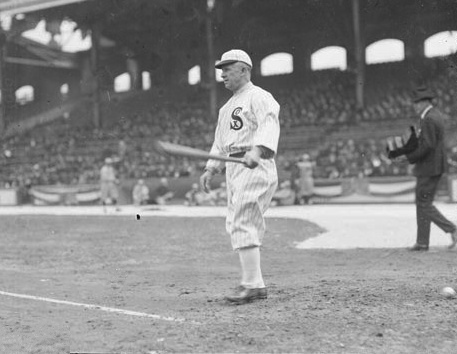
-
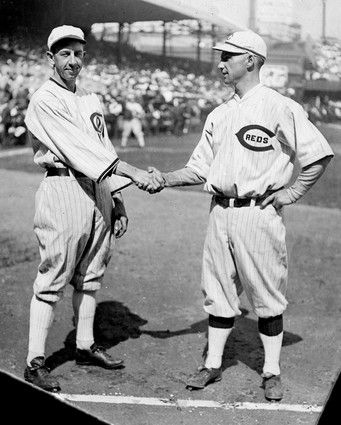
-
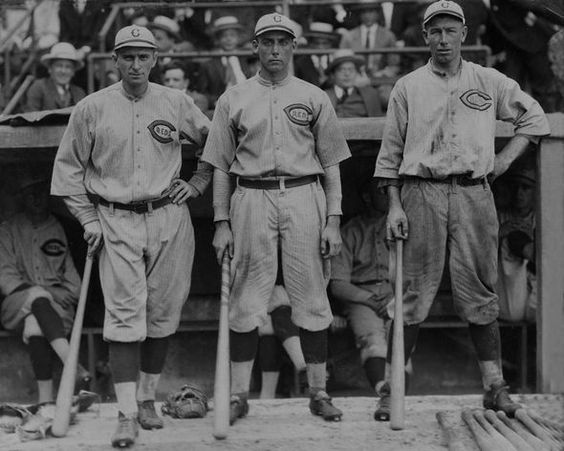
Reds players Sherry Magee, Edd Roush and Greasy Neale -
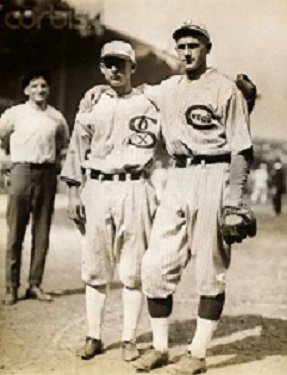
Game Six starters, Dickie Kerr and Jimmy Ring -
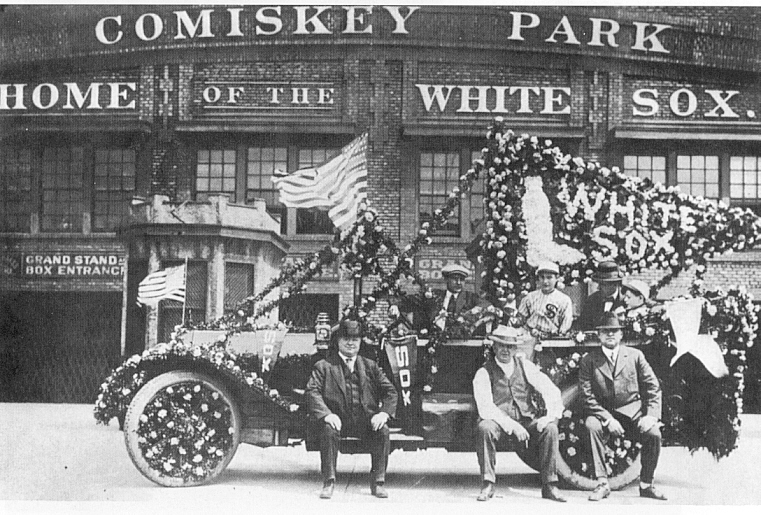
Comiskey Park, 1919 -
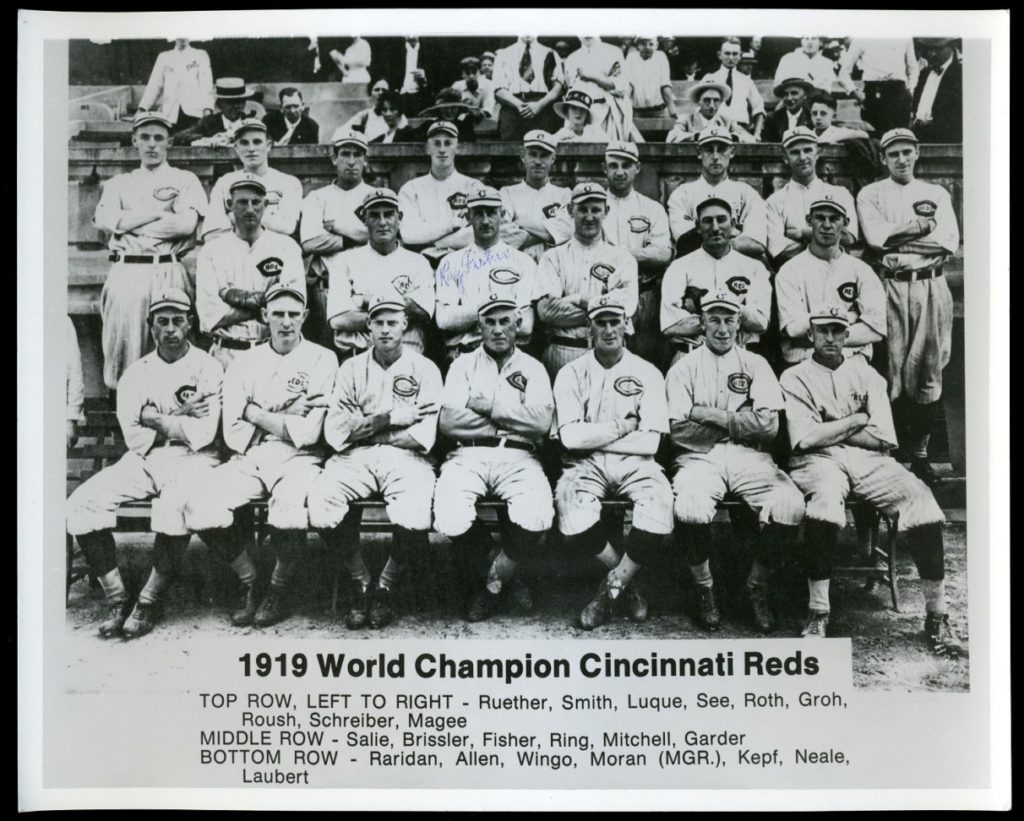
-
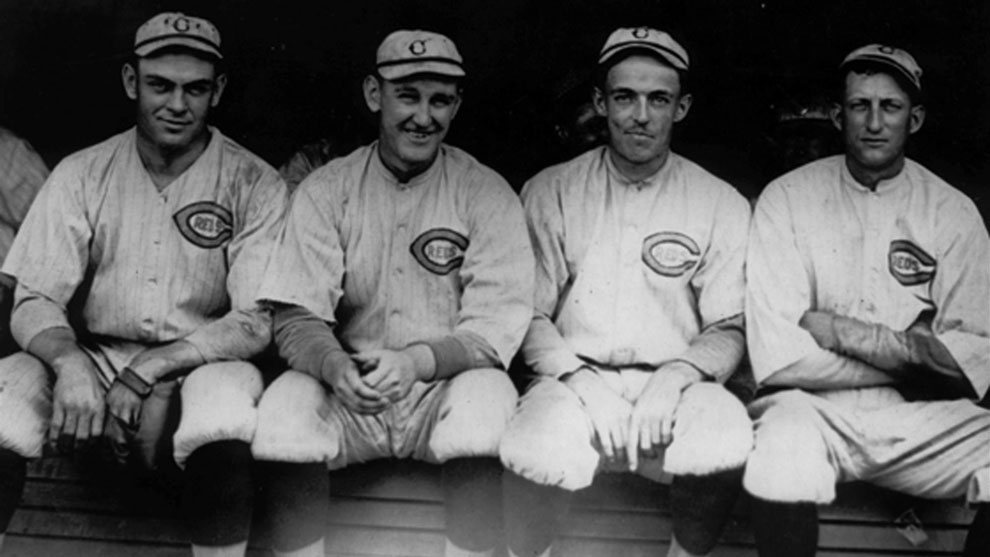
Red pitchers Hod Eller, Jimmy Ring, Dutch Ruether, and Slim Sallee. -
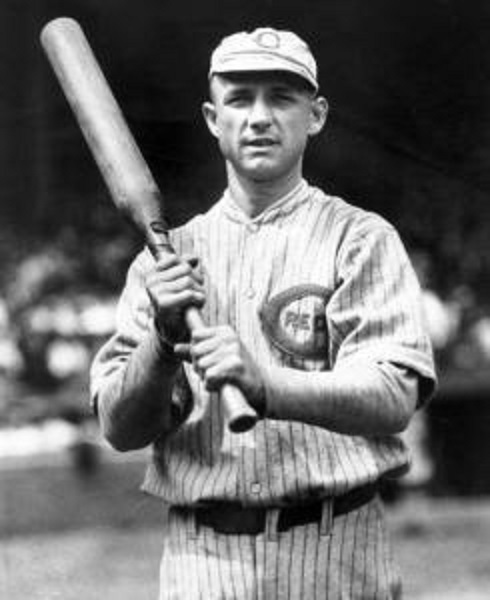
Heine Groh and his famous bottle-bat. -
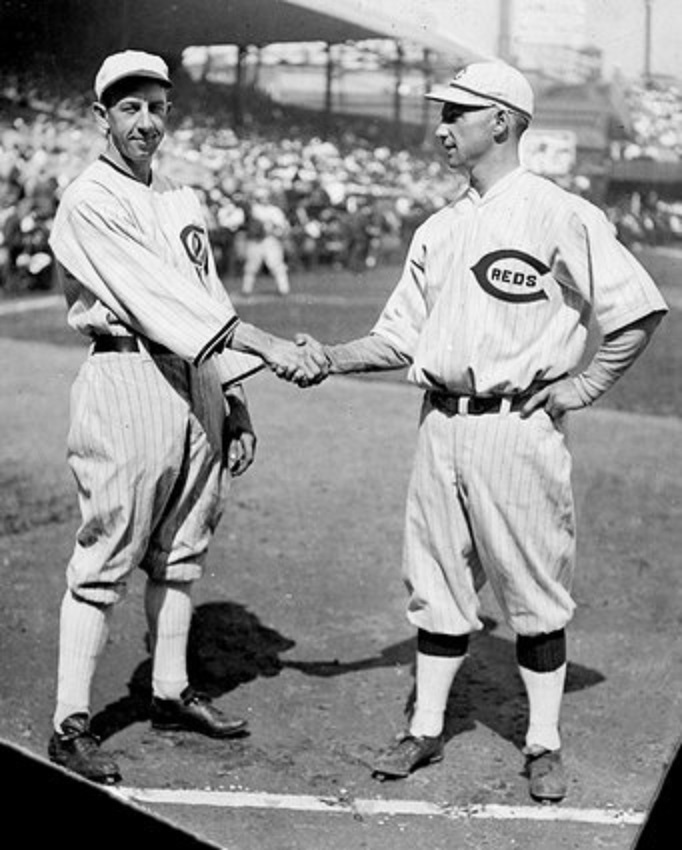
Eddie Collins and Heine Groh -
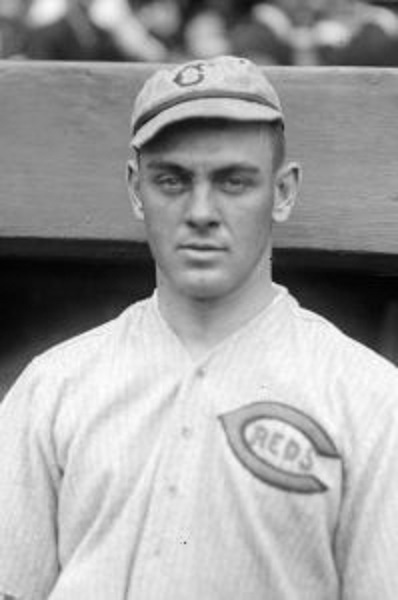
Hod Eller, ace of the Reds staff -
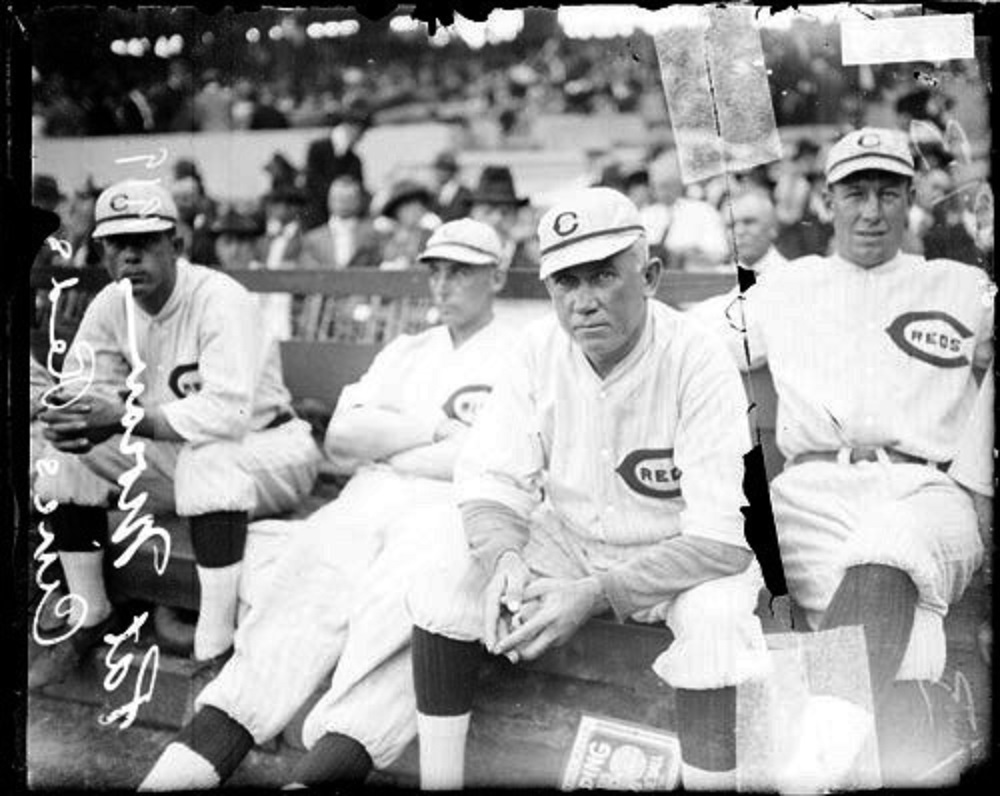
1919 Reds: Bill Rariden, Edd Roush, Pat Moran, Greasy Neale -
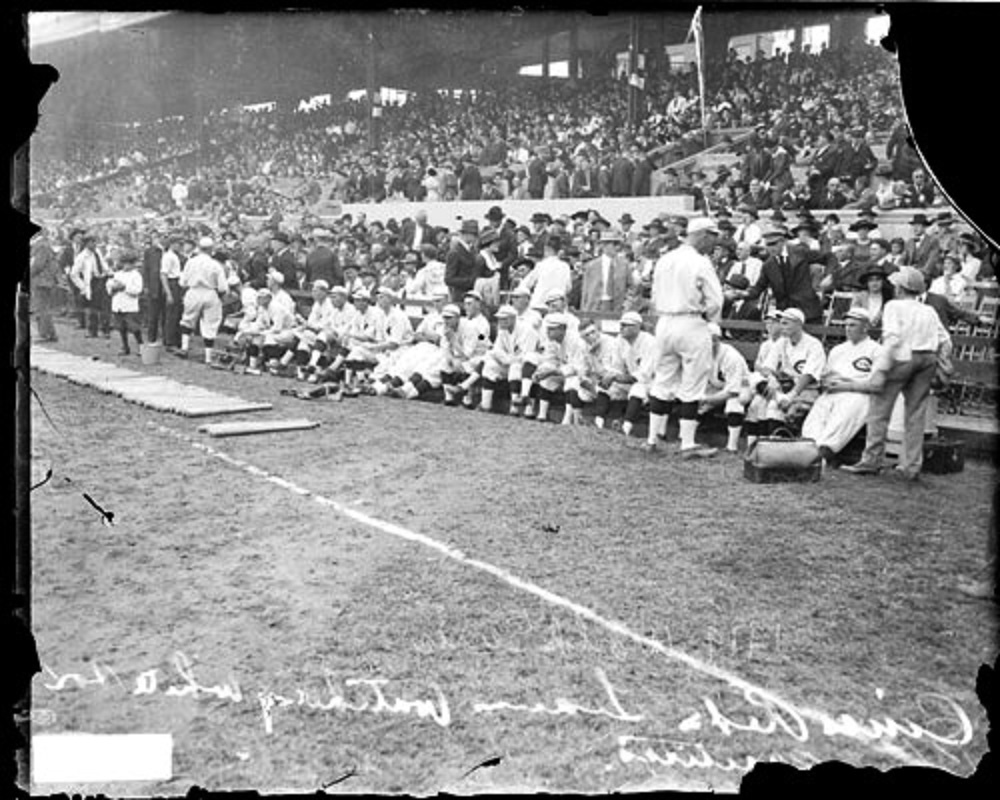
Red bench at Redland Field during the 1919 World Series -
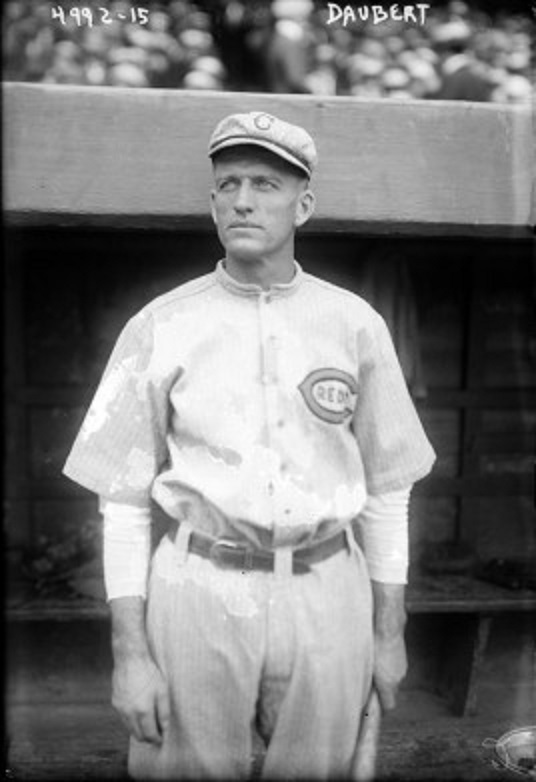
Jake Daubert -
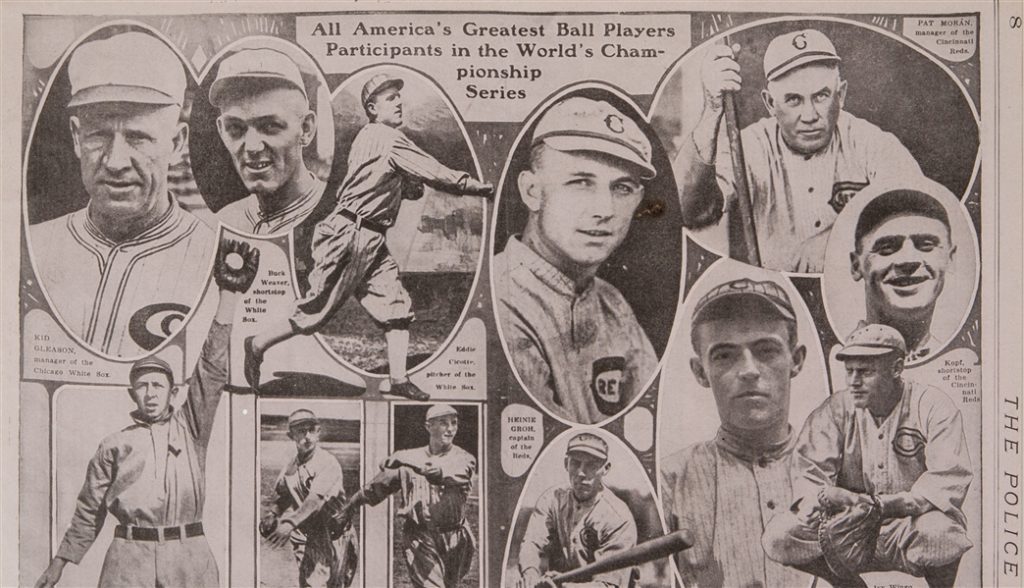
Collage of Reds and White Sox -
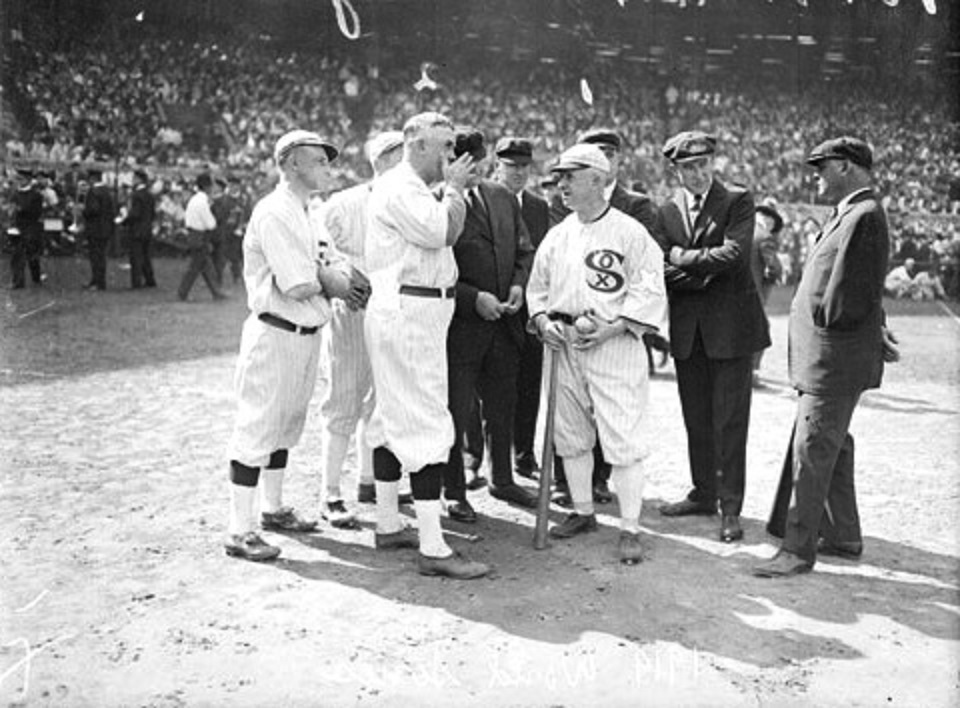
1919 World Series conference at the plate -
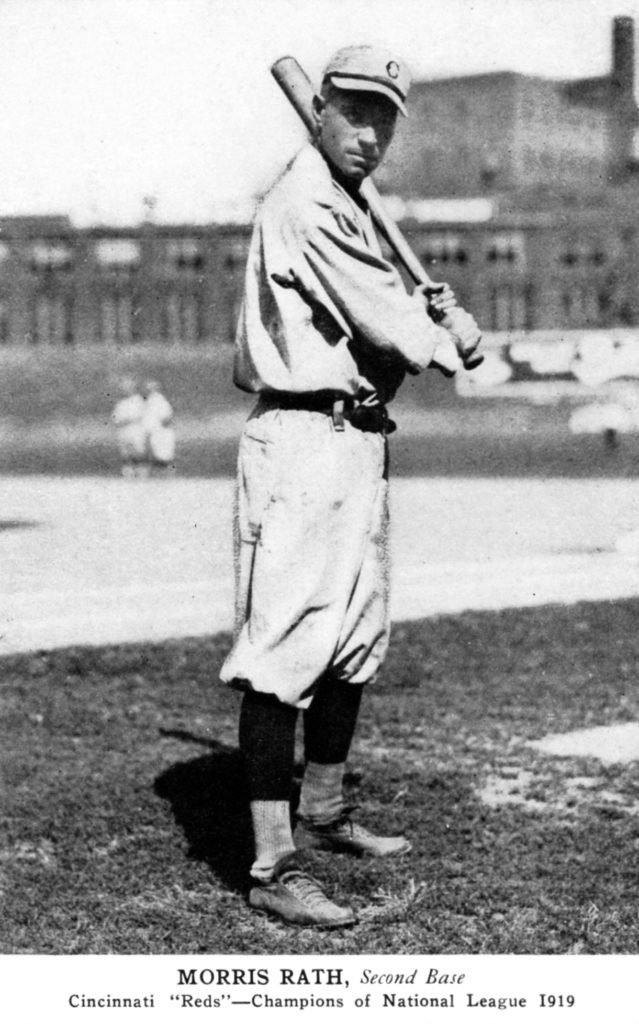
-
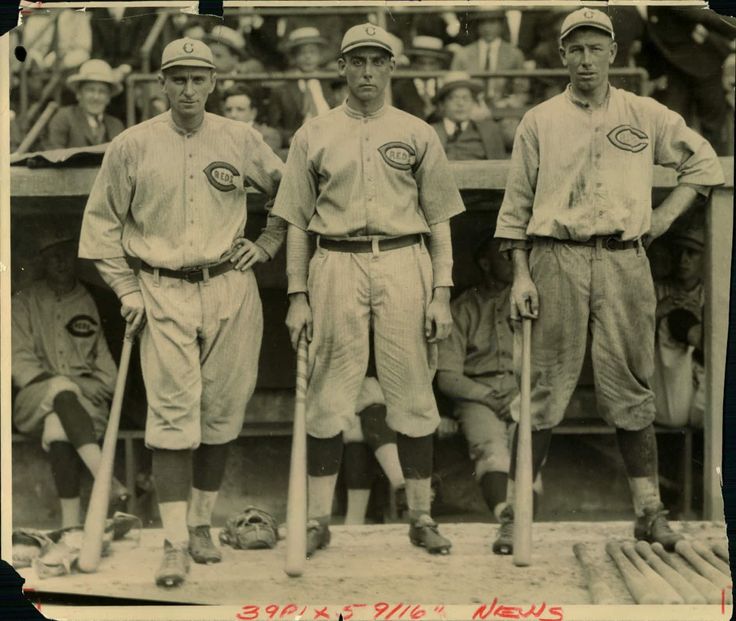
Reds outfield Sherry Magee, Roush, Neale -
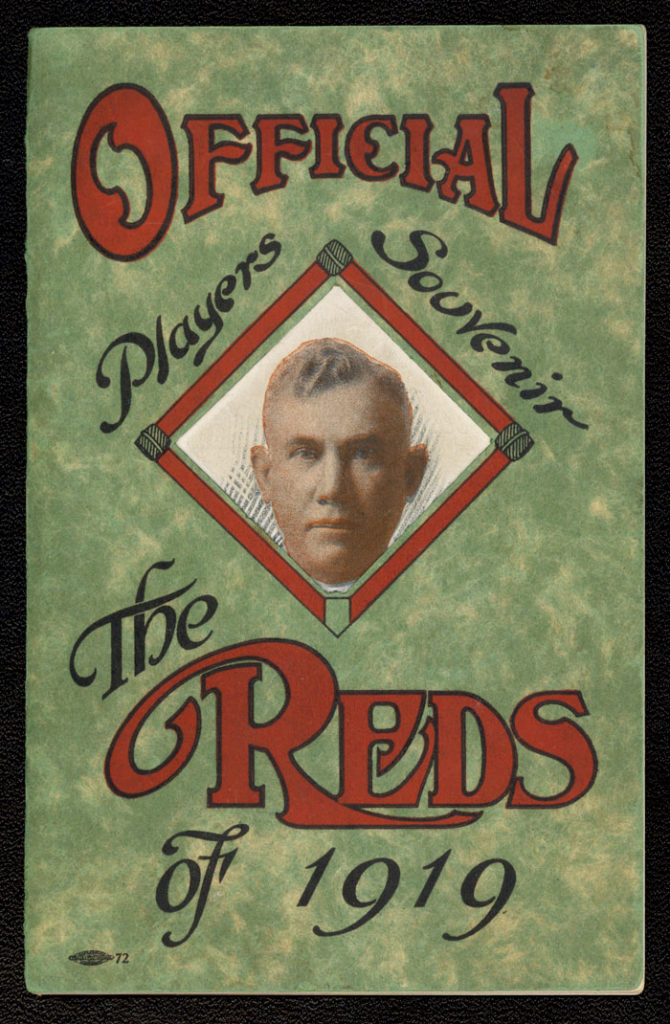
1919 Reds souvenir program
Another Look at the 1919 World Series: The Cincinnati Reds
Talk About Being Overshadowed!
“If they threw some of the games they must be consummate actors, and their place is on the stage, for nothing gave us the impression they weren’t doing their best.” -Reds’ manager Pat Moran
Those of you following along with my posts about the 1919 World Series know where I’m coming from. As I’ve said many times, I don’t know all that really happened, but my hunch is that the conventional wisdom doesn’t tell the whole story. Through these essays, I’ve been trying to shed some light on what was undoubtedly baseball’s darkest hour. It remains so one hundred years later.
I’ve recently been thinking about the team that actually won the Series: the Cincinnati Reds. “Upon further review,” I’ve come to the conclusion that the Reds were a pretty darn good team. Read on and see if you agree with me…
There’s no question the heavily-favored White Sox were a great team with stars like Shoeless Joe Jackson, Buck Weaver, Hap Felsch, Chick Gandil, Eddie Cicotte, Lefty Williams, Ray Schalk and Eddie Collins. But guess what? The Reds had their share of stars too; and, overshadowed by the Black Sox scandal, they were a team that got very little notoriety.
In the featured photo above, we see the 1919 Reds team photo, complete with 1919-vintage photo bombs! Complete player identifications below.
The Reds were led by their great Hall-of-Fame centerfielder, Edd Roush; and their roster included at least two other stars: Jack Daubert and Heine Groh. They were solid up and down their lineup, which included Ivey Wingo, Morrie Rath, Larry Kopf, and Greasy Neale. The Reds were managed by Pat Moran in his first season at the helm since taking over for the ailing Christy Mathewson. Moran had previously managed the Phillies (1915-1918), going 323-257, and leading them to the 1915 National League pennant.
With White Sox star Red Faber out for the series, the Reds actually had deeper pitching with starters Dutch Ruether, Hod Eller, Slim Salee, Jimmy Ring, and Ray Fisher; plus relievers Dolf Luque and Rube Bressler. The staff was all healthy and ready to go. In a nine-game series, pitching depth was key. During the regular season, they had a significant advantage over the White Sox in team ERA: 2.23 to 3.04; plus they had 23 shutouts to the White Sox’ 11.
While the White Sox had a higher team batting average (.287 to .263), the Reds had a better team fielding percentage (9.74 to 9.67), with 24 fewer errors during the regular season.
On February 1st, the Reds obtained first baseman Jake Daubert from the Brooklyn Robins, releasing the notorious Hal Chase and thereby solidifying their infield. In March, they added pitching depth as they signed Ray Fisher from the Yankees and Slim Sallee from the Giants off waivers.
The Reds were coming off a solid year (68-60) in the shortened 1918 season, and started 1919 with nine wins in the first ten games. After an 11-15 slump, they rebounded to 24-7 over their next 31 games. By late August they began to pull away from the league with an 81-34 record and a nine-game lead. They finished the season with a then franchise-best record of 96-44, the best record in the majors, nine games ahead of the second place Giants, cruising to their first pennant since 1882 when the franchise was in the American Association.
Star centerfielder Edd Roush posted a league-leading .321 average, a team-high 71 RBI, plus 20 stolen bases. Third baseman Heinie Groh hit .310 with a team-high five home runs, 63 RBIs, and 21 stolen bases; while newly acquired Jake Daubert hit .276 with two home runs and 44 RBIs. Outfielder Greasy Neale led the team with 28 stolen bases.
Hod Eller anchored the pitching staff, going 19-9 record with a 2.39 ERA, over 248 innings. Dutch Ruether led the National League with a .760 winning percentage (19-6), and a team-best 1.82 ERA. Slim Sallee led the Reds in victories with a 21-7 record, a 2.06 ERA and a team-high 22 complete games. Newly acquired Ray Fisher posted a solid 14-5 record with a 2.17 ERA in 26 games.
It’s interesting to read the reflections of the Reds’ players on the 1919 World Series. Without exception, they all thought they had won fair and square. Some continued to believe that even after evidence to the contrary broke.
Jake Daubert: “I was there, I saw them. We had the jump on the Sox in every game.”
Larry Kopf: We didn’t surmise a damn thing. I couldn’t figure it out.”
Ivy Wingo: “Cicotte worked had to make us easy outs.”
Hod Eller: “The White Sox were playing for keeps.”
Greasy Neale: “There may have been some queer plays in Game One. But all the other games were honestly contested.”
Edd Roush: I can’t yet see how they could play the way they did and throw the games. It’s a mystery to me.”
Heine Groh: “They seemed to be doing their level best to win. We attributed the stories to the White Sox not trying to ‘sour grapes’. I didn’t see anything that looked suspicious. But I think we’d have beaten them either way.”
Reds’ owner Garry Hermann: “…we believe firmly that we would have beaten them had every man of Comiskey’s team played the string out and on the level.”
Overall this was a very solid Reds team. Were they as good as their 1970’s descendants, the Big Red Machine? No, not by a long shot. But they were certainly no fluke; and, by the time the World Series rolled around, could very well have been the better team. Plus the White Sox were a dissension-ridden team with bitter rival factions and were carrying extreme mental baggage as the Series began; while the Reds were a close-knit team that, as the underdogs, played loose with nothing to lose.
1919 Cincinnati Reds Player Identicifcations
Top: Sherry Magee, Edd Roush, Morrie Rath, Hod Eller, Slim Sallee, Ed Gerner, Ray Fisher, Jimmy Ring, Heine Groh. Middle: Jake Daubert, Charlie See, Dutch Ruether, Pat Moran, Bill Rariden, Nick Allen, Ivey Wingo, Greasy Neale, Rube Bressler. Front: Jimmy Smith, Dolf Luque, Pat Duncan, Larry Kopf, Roy Mitchell, ?.
Gary Livacari
Photo Credits: All from Google search
Check out my book, “Memorable World Series Moments,” now available on Amazon in e-book and paperback. All profits go to the Illinois Veterans Foundation: https://www.amazon.com/Memorable-World-Moment…/…/ref=sr_1_1…
We are a participant in the Amazon Services LLC Associates Program, an affiliate advertising program designed to provide a means for us to earn fees by linking to Amazon.com and affiliated sites. Click here to view Amazon’s privacy policy

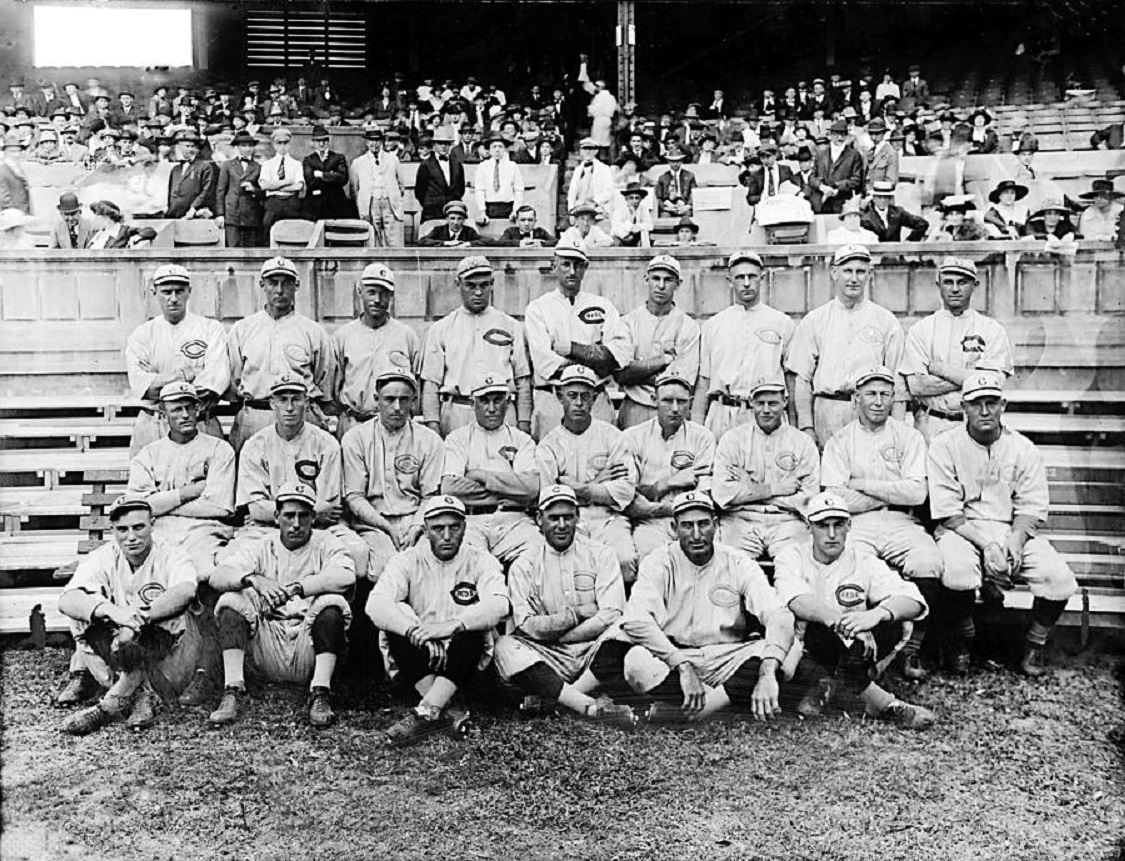

Excellent article, and thank you for adding this much-needed perspective.
I am interested in anything you may know about the relationship -if any- between Neale and Kopf. Neale coached football at Washington & Jefferson -leading it to the 1922 Rose Bowl. Kopf’s brother was a member of that team, becoming the first freshman ever to play in a Rose Bowl.
Thanks for the great info Dennis! Sorry, I don’t have any insights into the relationship between Neale and Kopf. I always get him mixed up with Benny Kauff.